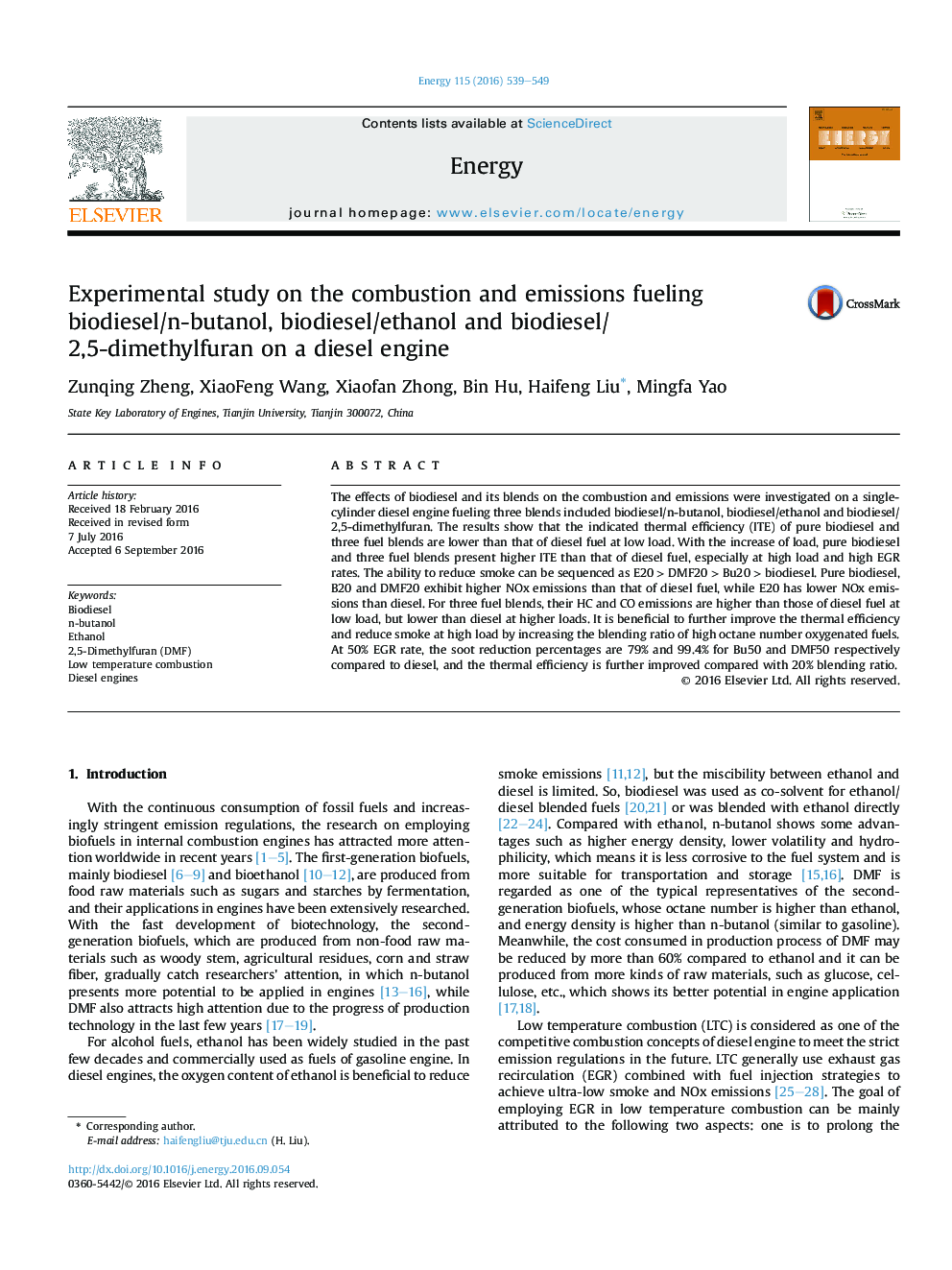| Article ID | Journal | Published Year | Pages | File Type |
|---|---|---|---|---|
| 5476695 | Energy | 2016 | 11 Pages |
Abstract
The effects of biodiesel and its blends on the combustion and emissions were investigated on a single-cylinder diesel engine fueling three blends included biodiesel/n-butanol, biodiesel/ethanol and biodiesel/2,5-dimethylfuran. The results show that the indicated thermal efficiency (ITE) of pure biodiesel and three fuel blends are lower than that of diesel fuel at low load. With the increase of load, pure biodiesel and three fuel blends present higher ITE than that of diesel fuel, especially at high load and high EGR rates. The ability to reduce smoke can be sequenced as E20Â >Â DMF20Â >Â Bu20Â >Â biodiesel. Pure biodiesel, B20 and DMF20 exhibit higher NOx emissions than that of diesel fuel, while E20 has lower NOx emissions than diesel. For three fuel blends, their HC and CO emissions are higher than those of diesel fuel at low load, but lower than diesel at higher loads. It is beneficial to further improve the thermal efficiency and reduce smoke at high load by increasing the blending ratio of high octane number oxygenated fuels. At 50% EGR rate, the soot reduction percentages are 79% and 99.4% for Bu50 and DMF50 respectively compared to diesel, and the thermal efficiency is further improved compared with 20% blending ratio.
Related Topics
Physical Sciences and Engineering
Energy
Energy (General)
Authors
Zunqing Zheng, XiaoFeng Wang, Xiaofan Zhong, Bin Hu, Haifeng Liu, Mingfa Yao,
